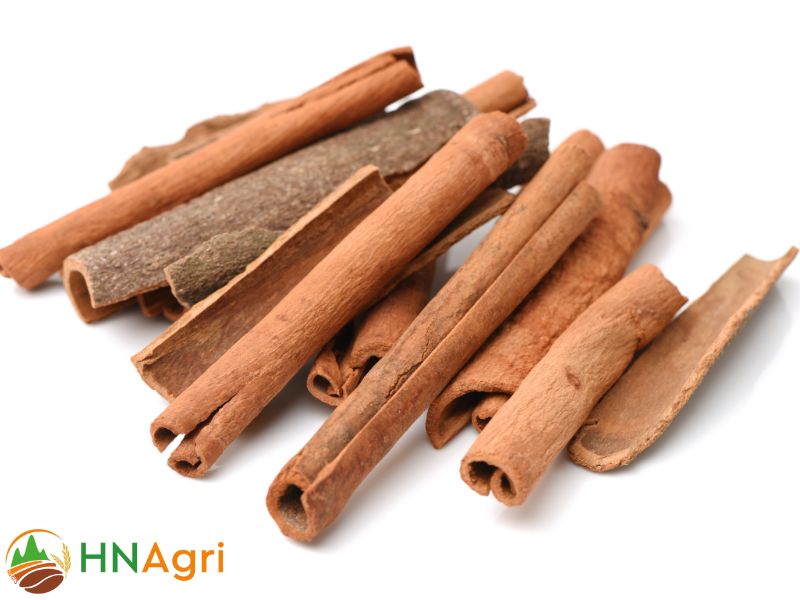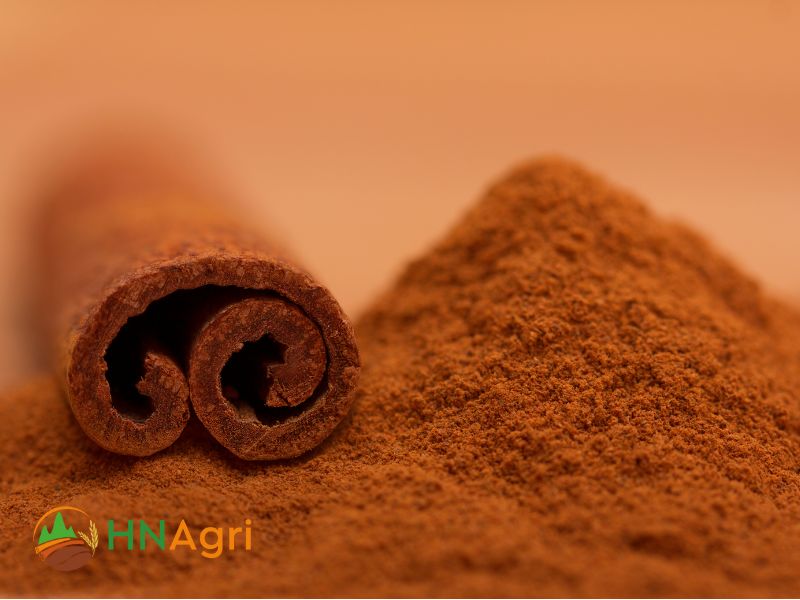Discover the fascinating world of Vietnam cinnamon cultivation and unlock its well-guarded secrets. Delve into the rich history, meticulous techniques, and sustainable practices that make Vietnam’s cinnamon unique. Explore this comprehensive guide to uncover the hidden treasures and aromatic wonders of Vietnam’s cinnamon industry.
1. Overview Of Vietnam Cinnamon Cultivation
Learn about the sustainable practices and deep-rooted connection to the land that contribute to Vietnam’s rich cinnamon industry. Join us on a sensory adventure as we unravel the secrets behind this prized spice and its integral role in Vietnamese culture and cuisine.
1.1. The Rich History Of Vietnam Cinnamon Cultivation
Vietnam cinnamon cultivation boasts a rich and illustrious history that spans centuries. The story begins with the discovery of the abundant cinnamon trees in the region, captivating traders and explorers from afar. From ancient times, Vietnam has been recognized as a hub of cinnamon production, renowned for the exceptional quality and aromatic properties of its cinnamon.
The cultural significance of cinnamon in Vietnam is deeply rooted. The spice holds a prominent place in traditional ceremonies and is associated with prosperity and luck. Cinnamon has become an integral part of Vietnamese culinary traditions, enhancing a wide variety of dishes with its unique flavor and fragrance.

Throughout the ages, Vietnam has honed traditional techniques in cinnamon cultivation, passed down through generations. Farmers carefully select ideal locations, ensuring optimal growing conditions for the cinnamon trees. Meticulous care is taken to preserve the long-term health of the land and uphold sustainable practices, prioritizing both quality and environmental stewardship.
The aromatic legacy of Vietnam’s cinnamon extends far beyond its borders. Its distinct aroma and flavor have made it a sought-after ingredient in global cuisines. From traditional Vietnamese dishes to international culinary creations, cinnamon from Vietnam adds a warm and inviting touch to a wide array of culinary delights.
1.2. Key Areas For Vietnam Cinnamon Cultivation
Vietnam has several key areas known for their ideal conditions for cinnamon cultivation. These regions are renowned for producing high-quality cinnamon and play a significant role in Vietnam’s cinnamon industry. Here are some of the key areas for Vietnam cinnamon cultivation:
- Yen Bai: Located in the mountainous region of Northwest Vietnam, Yen Bai is famous for its cinnamon cultivation. The area’s cool climate, fertile soil, and abundant rainfall create optimal conditions for the growth of cinnamon trees. Yen Bai cinnamon is highly regarded for its strong aroma and rich flavor.
- Quang Nam: Situated in Central Vietnam, Quang Nam is another prominent region for cinnamon cultivation. The area’s diverse topography, including hills and coastal plains, provides a varied microclimate that contributes to the unique characteristics of Quang Nam cinnamon. The cinnamon produced here is prized for its delicate aroma and subtle sweetness.
- Thanh Hoa: Located in the northern part of Central Vietnam, Thanh Hoa is renowned for its cinnamon production. The region’s favorable climate and fertile soil make it an ideal area for growing cinnamon. Thanh Hoa cinnamon is known for its vibrant color, strong fragrance, and bold flavor profile.
- Nghe An: Situated in North Central Vietnam, Nghe An is another important region for cinnamon cultivation. The area’s diverse terrain, including mountains, hills, and coastal plains, offers a range of microclimates that contribute to the quality and flavor of Nghe An cinnamon. The cinnamon produced here is highly aromatic and has a well-balanced flavor.
- Lam Dong: Located in the Central Highlands of Vietnam, Lam Dong is known for its cinnamon cultivation. The region’s mild climate, fertile volcanic soil, and abundant rainfall create optimal conditions for growing high-quality cinnamon. Lam Dong cinnamon is prized for its strong aroma, rich taste, and vibrant color.
These key areas in Vietnam provide the perfect combination of climate, soil, and geography, resulting in cinnamon of exceptional quality. The cinnamon produced in these regions not only caters to domestic demand but also plays a significant role in the international cinnamon market, showcasing Vietnam’s prominence in the global spice industry.
2. Special Of Vietnam Cinnamon Cultivation : From Planting To Harvest
Vietnam cinnamon cultivation is characterized by a series of special practices and techniques that ensure the production of high-quality cinnamon. From the initial planting stage to the final harvest, each step in the process contributes to the unique characteristics and exceptional flavor of Vietnam cinnamon. Let’s explore the special aspects of Vietnam cinnamon cultivation, from planting to harvest:
- Ideal Growing Conditions: Farmers carefully select suitable locations for cinnamon cultivation, often in mountainous regions with well-drained soil. The climate in these areas, characterized by a combination of cool temperatures, high humidity, and abundant rainfall, creates optimal conditions for cinnamon tree growth.
- Propagation and Planting: Vietnam cinnamon is typically propagated through seeds or by using stem cuttings from established trees. These methods ensure the genetic integrity and quality of the cinnamon plants. Farmers prepare the soil by incorporating organic matter and providing proper irrigation to support healthy growth.
- Pruning and Canopy Management: Regular pruning is carried out to shape the cinnamon trees, promote better airflow, and facilitate sunlight penetration. This practice enhances the overall health of the trees and encourages the development of high-quality bark.
- Careful Timing of Harvest: Harvesting cinnamon requires precision and timing. The outer bark, known as the cassia bark, is carefully stripped from the trees at the appropriate stage of maturity. Farmers often choose the dry season for harvesting, as it allows for better bark drying and preservation of the aromatic compounds.
- Peeling and Drying: After harvesting, the cinnamon bark is meticulously peeled from the branches. The outer bark is removed, leaving behind the prized inner bark, known as the cinnamon quill. This inner bark is carefully handled to maintain its integrity and prevent damage. The cinnamon quills are then naturally sun-dried or dried using controlled methods, allowing them to develop their distinct curled shape.
- Sorting and Grading: Once the cinnamon quills are dried, they are sorted and graded based on their size, thickness, color, and aroma. This process ensures that only the highest quality cinnamon makes it to the market, meeting the stringent standards for Vietnam cinnamon.
- Quality Control and Packaging: Vietnam’s cinnamon processing facilities employ strict quality control measures to maintain the integrity and purity of the cinnamon. The processed cinnamon is carefully packaged in airtight containers or bags to preserve its flavor, aroma, and freshness.
The special practices employed in Vietnam cinnamon cultivation, from the meticulous selection of growing areas to the careful harvesting and processing techniques, result in cinnamon of exceptional quality and aroma. These practices are passed down through generations, preserving the rich heritage and ensuring the continued production of Vietnam’s renowned cinnamon.
3. Advantages And Disadvantages Of Vietnam Cinnamon Cultivation
Here are some advantages and disadvantages of people in Vietnam cinnamon cultivation:
3.1. Advantages of Vietnam Cinnamon Cultivation:
- Favorable Climate and Geography: Vietnam’s diverse climate and geographical features provide ideal conditions for cinnamon cultivation. The country’s tropical climate, abundant rainfall, and fertile soil contribute to the growth of high-quality cinnamon trees.
- High-Quality Cinnamon: Vietnam is known for producing cinnamon with exceptional flavor, aroma, and essential oil content. The unique combination of climate, soil, and cultivation practices results in cinnamon that is highly sought after in both domestic and international markets.

- Economic Opportunities: Cinnamon cultivation in Vietnam offers significant economic opportunities for farmers and local communities. The industry provides employment and income generation, contributing to the livelihoods of many individuals involved in cinnamon production and trade.
- Cultural Significance: Cinnamon has deep cultural significance in Vietnam, being an essential ingredient in traditional cuisine and ceremonies. The cultivation of cinnamon preserves cultural heritage and traditional practices, further enriching the cultural fabric of the country.
- Export Potential: Vietnam’s cinnamon has gained recognition globally for its quality, leading to increased export opportunities. The country has become a major player in the international cinnamon market, contributing to its export earnings and trade balance.
See more: Discovering Reputable Vietnam Cinnamon Suppliers
Vietnamese Cinnamon Sticks A Guide For Wholesalers
3.2. Disadvantages of Vietnam Cinnamon Cultivation:
- Environmental Impact: Like any agricultural activity, cinnamon cultivation can have environmental impacts if not managed sustainably. Intensive farming practices, improper land management, and excessive use of fertilizers or pesticides can lead to soil erosion, water pollution, and biodiversity loss.
- Market Competition: Vietnam faces competition from other cinnamon-producing countries in the global market. As demand for cinnamon continues to grow, maintaining a competitive edge and ensuring fair market access can be a challenge for Vietnamese cinnamon growers.
- Price Fluctuations: Cinnamon prices can be subject to volatility due to factors such as global supply and demand dynamics, currency exchange rates, and market trends. Price fluctuations can affect the profitability and income stability of cinnamon farmers.
- Pest and Disease Management: Cinnamon trees are susceptible to various pests and diseases that can adversely affect yields and quality. Implementing effective pest and disease management strategies is crucial to mitigate potential losses and maintain healthy cinnamon plantations.
- Limited Land Availability: The availability of suitable land for cinnamon cultivation in Vietnam may be limited. Increasing competition for land use from other sectors, urbanization, and land fragmentation can pose challenges for expanding cinnamon plantations.
It is important to note that many of the disadvantages associated with cinnamon cultivation can be mitigated through sustainable farming practices, proper land management, and market diversification efforts. Overall, the advantages of Vietnam cinnamon cultivation outweigh the disadvantages, highlighting the significance and potential of this thriving industry in the country.


